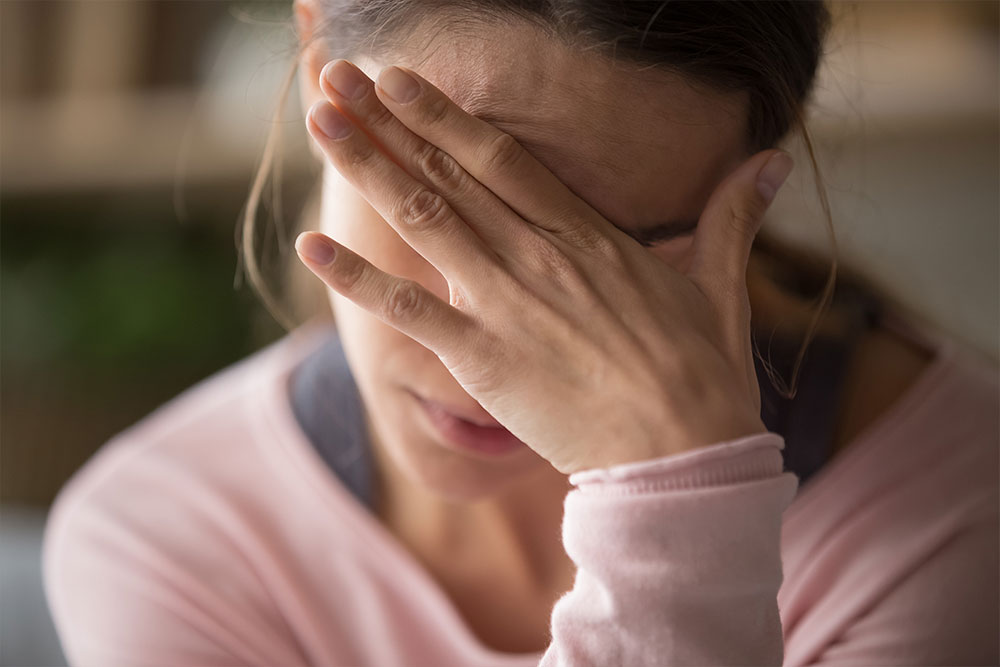One may have often come across conversations where panic and anxiety attacks are talked about in the same context. Sometimes, it can also be diagnosed incorrectly, if not done by a mental health professional. However, the truth is that there is a difference between the two. Let’s have a look.

Anxiety Attack
Anxiety is the natural physical reaction to stress, that’s attributed to uncertainty. According to Dr Mehezabin Dordi, clinical psychologist, rehabilitation, and sports medicine department, Sir HN Reliance Foundation Hospital, Mumbai adds, “One must be aware that if the feelings of anxiety are severe, or last for longer than six months, it can be an anxiety disorder.”
The common symptoms of anxiety are worry, fear, and distress. There is no diagnostic recognition for anxiety attacks. However, a common factor remains that they come on gradually, and are triggered by something within the person’s environment.

Panic Attack
If for no apparent reason you get intensely fearful, triggering extreme physical reactions such as palpitations, or irregular breathing, even though there’s no element of danger around you, it is said that you’re in a state of panic. Dr Dordi adds, “When a danger alarm goes off in your mind and makes you extremely scared and jittery, this is known as a panic attack. Those who experience panic attacks think they’re about to die, are having a heart attack, or going crazy.”
The common symptoms are shortness of breath, racing heartbeat, extreme fear, nausea, and an inability to control one’s thoughts. Panic attacks are recognised diagnostically. If you experience the symptoms of panic attacks frequently, or for a month consistently, it is advisable to see a medical professional. At first, a physical examination is done to rule out health issues such as a heart attack. Then, a psychological assessment is conducted to understand your symptoms better.

However, it must be noted that the fear one experiences during a panic attack, does not truly reflect the dangers they feel around them. The fear can stem from a recurring thought, far removed from the current situation.
They are classified into two categories – unexpected and expected. Unexpected panic attacks occur without a definitive cause, while expected panic attacks take place due to stressors that are present in the environment, for example, phobias (such as agoraphobia-the fear of going out). Although anyone can have a panic attack, if it becomes constant, it may be a sign of panic disorder.

Diagnosis And Treatment
Perhaps the biggest difference between the two is that while panic attack is statistically recognised by The Diagnostic and Statistical Manual of Mental Disorders, Fifth Edition (DSM-5), which is a classification of mental health disorders used by mental health professionals, anxiety attacks are not. They are usually open to evaluation by a mental health expert, as per their signs and symptoms.
According to the DSM-5, a panic attack can be diagnosed if a person is experiencing one of more of the following symptoms:
- Palpitations or sweating profusely
- Fear of dying, feeling choked
- Trembling or shaking
- Shortness of breath, chest pain which feels like a heart attack
- Feeling dizzy or nauseous
- Alternating between chills or hot flashes
- Feeling detached from oneself and the environment
With anxiety attack, symptoms such as excessive worry about the future, and a feeling of being on the edge about situations around the person are common. These factors slowly lead to an attack.
A trained mental health professional can help distinguish between the two and provide a valid diagnosis. Accordingly, a treatment plan is charted out. Dr Dordi shares, “Some common treatment options include counselling, psychotherapy, or medication such as anti-anxiety drugs or anti-depressants. Depending upon your condition, a combination of treatments can also be recommended by your doctor. As the treatment progresses, it can be modified as per your progress.”

Coping Strategies
The best way to deal with your anxiety or symptoms is to follow the course of treatment recommended by your doctor. If you feel that you might be having a panic or anxiety attack, Dr Dordi suggests some coping strategies:
1. Deep breathing: If you feel your breath faltering, try to bring your focus back on each breath you take. Inhale slowly as your feel your stomach fill up with air, and exhale as you count till four. Keep repeating this to bring your breathing back to normal.
2. Acknowledge the feeling: The feeling of anxiety and panic attacks can be extremely frightening, no matter how many times you may have experienced it. However. It is important to acknowledge how you’re feeling and remember that it is temporary, and will pass.

3. Mindfulness is key: Being present is the key principle of mindfulness. This technique is increasingly used to treat panic and anxiety disorders, as it helps you ground your thoughts. One way to go about practising this is to observe your thoughts and how you feel, without actively reacting to it.
4. Relax, take it easy: If and when you experience anxiety or panic attacks, try to shift your focus on things you find relaxing. It could be anything ranging from closing your eyes to get your thoughts aligned, or diffusing essential oils to create a calming atmosphere; basically just about any activity that leads your thoughts away from what’s causing panic and anxiety.
5. Live better: It is no secret that your lifestyle has a huge impact on your mental health. Some lifestyle changes over time can help prevent panic and anxiety attacks; such as limiting consumption of caffeine and alcohol, eating a healthy balanced diet, regular exercise or practising yoga and meditation, identifying the sources of stress in your life and managing them, putting a stop to your negative thoughts, or even reaching out to family, friends, or your medical care provider whenever you feel overwhelmed.